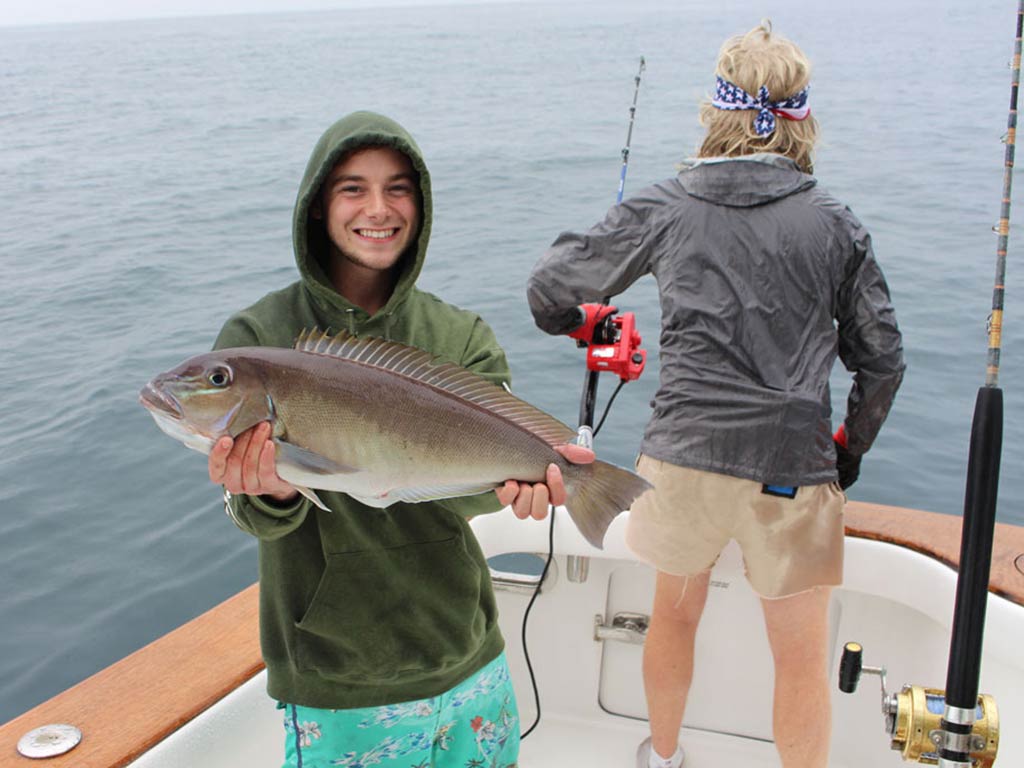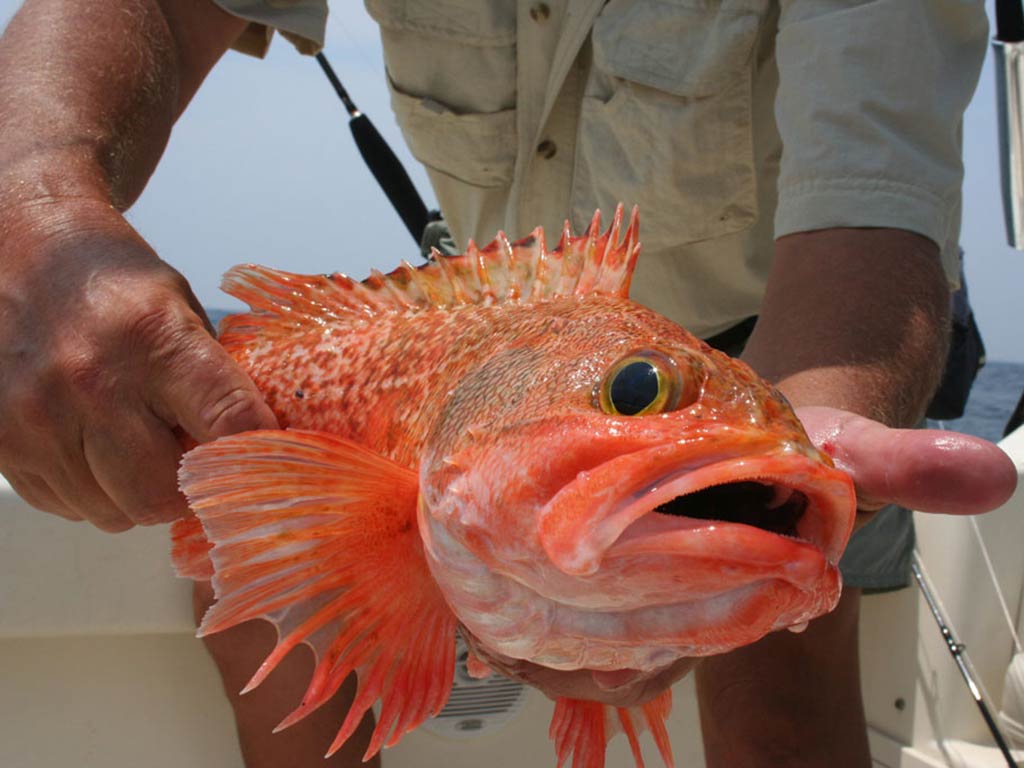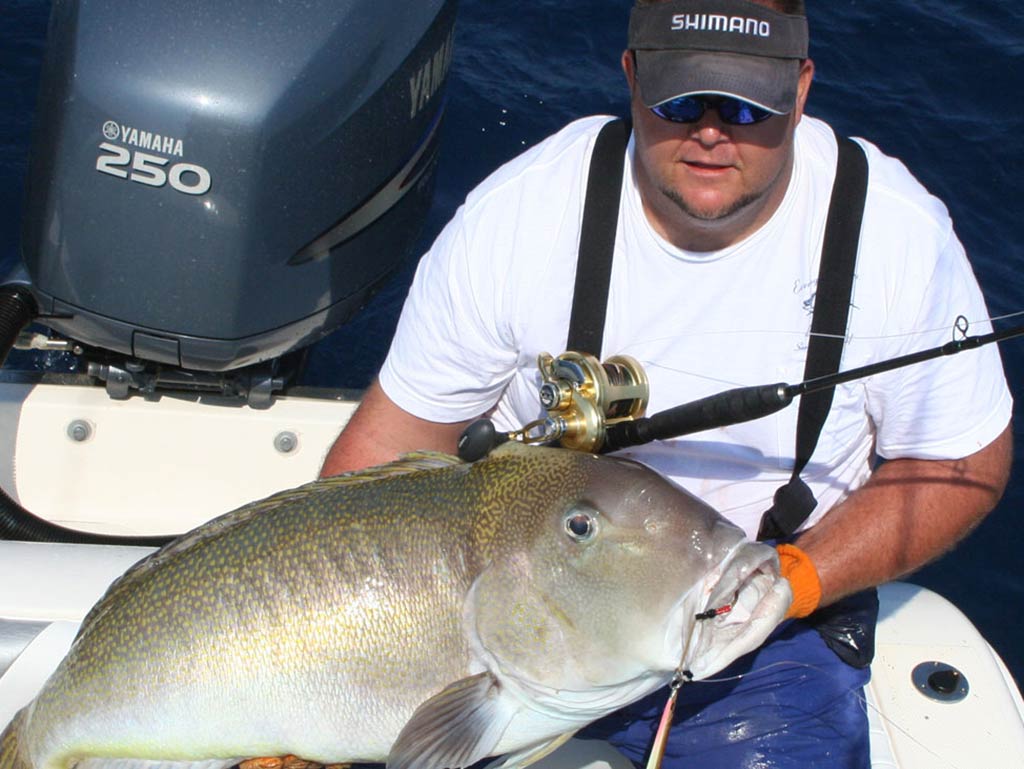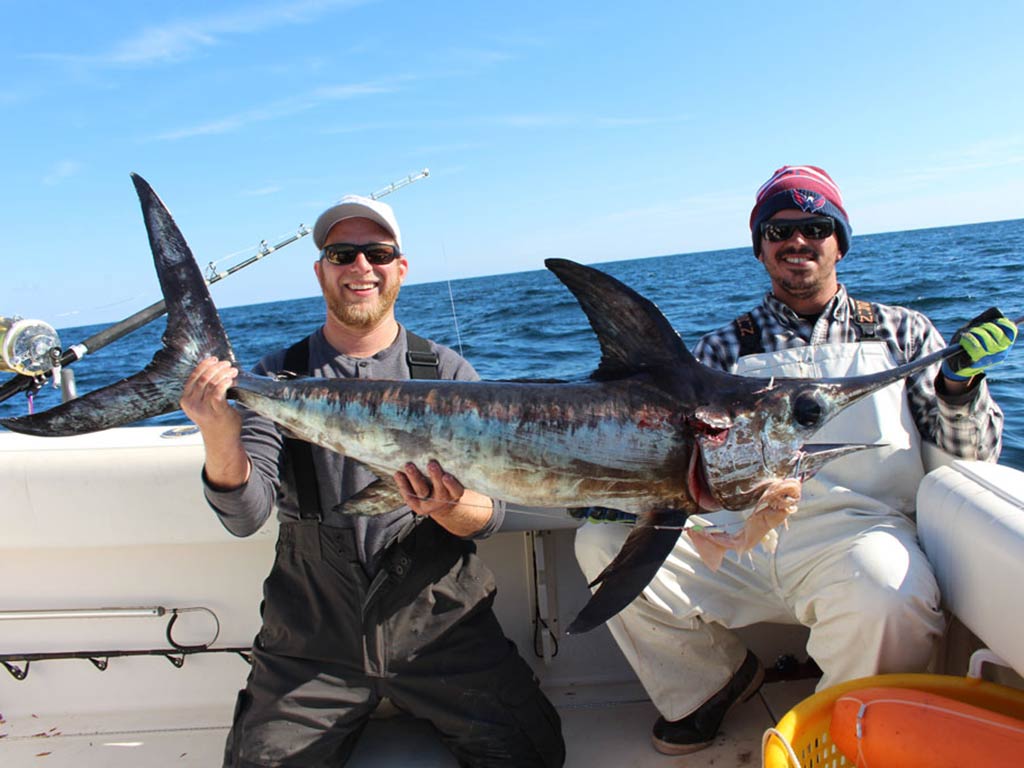Thanks to tasty catches like Tilefish and exciting ones like Swordfish, deep dropping has become more and more popular in recent years.

However, it’s no easy endeavor. And many anglers will opt to use electric reels rather than hand-crank fish up from hundreds of feet beneath the surface. But if you put in the time and effort, deep drop fishing will be both fun and productive.
With my years of experience on the water, it’s a technique I’ve tried plenty of times. By now, I know exactly what makes deep dropping a success. So, put the following deep dropping tips to use and up your offshore fishing game!
What is deep drop fishing?
There’s no set definition for just how deep you need to drop a bait for it to be considered deep drop fishing. However, most saltwater anglers would describe it as fishing on or near the bottom in 300 feet or more of water. In some cases, you may drop to 1,500 or even 2,000 feet!
The biggest determining factor here is the species you’d like to target. Blueline Tilefish, for example, generally live 250–400 feet deep. But Golden Tilefish are more often found in depths of 500–1,000 feet. And if you want to go after those prized Swordfish, you’ll be dropping baits in more like 1,000–2,000 feet of water.
Deep Dropping Tips
While each species and each depth will require specific rigs, gear, and tackle, it doesn’t mean there aren’t any tips that ring true across the board. Whatever your quarry may be, you’ll likely have better success if you remember these tips and tricks:
1. Always Use Braid

Rig up smartly. Always use braid mainline, and never try deep dropping with monofilament. Braid line has virtually no stretch and, thus, provides much better sensitivity than mono.
The deeper you drop, the more this matters. In 1,000 or more feet of water, you can feel a 1 lb fish nipping at a bait if your mainline is braid. But in a mere few hundred feet of water, the stretchy mono will absorb the vibrations and you might never know that a fish has taken your bait! On top of sensitivity and stretch, braid also has a smaller diameter, so it cuts through the water better. You can pack much longer lengths on a reel as opposed to spooling up with mono.
2. Add a Monofilament Leader
The same absence of stretch that makes braid so good for the mainline also makes it a poor choice for a leader. When you’re pulling up a fish those last few feet, a bit of stretch can be a good thing. So if the fish surges, the line can absorb some of the force. Plus, braid has poor abrasion resistance, as it tends to break if it rubs against rocky bottoms or pieces of wreckage.
The exact amount of leader you’ll want to use will vary by the fishery. But as a general rule of thumb, it’s good to have 25 feet or so of monofilament leader between your mainline and your hooks.
3. Present Multiple Baits

Choose a rig or lure that allows you to present multiple baits. Deep drop rigs will commonly have 3–6 hooks, and jigs intended for deep dropping with bait added usually have hooks both at the top and the bottom of the jig. The simple reality here is that it takes a lot of time to get your rigs down deep, and even more to bring them back up – especially if you’re hand-cranking them.
If you get a bite but don’t hook up, you don’t want to have to reel all the way in to check your bait. Having multiple baits means you can keep your rig down there where it belongs without worrying that a nibbler has cleaned the hook.
4. Choose Rugged Baits
Again, this is a matter of making sure you minimize having to reel up and re-drop between bites. Golden Tilefish might like clam and squid more than cut fish, but the softer baits are easy for the fish to strip off. If it takes half an hour to reel up and re-drop, it probably makes sense to bait up with a more rugged piece of cut fish – even if that means waiting twice as long to get bit!
Note that many anglers will split the difference when using rigs with a large number of hooks, and bait several hooks with the more desirable bait and several with the more rugged offering.
5. Mix Up Your Technique

When the wind and seas aren’t cooperating, switch to a different type of fishing. A slow drift is absolutely necessary to get your line down without too much of an angle. And in a stiff breeze or strong current, you may need to let out over 1,500 feet of line to hit the bottom in 500 feet of water. Even then, you may need to let out line from time to time to prevent your rig from being swept up off the bottom. This makes deep drop fishing much, much harder, and will push the line capacity limits of even the largest reels.
You may be able to back your boat into the seas to slow the drift, but this requires paying constant attention and can be dangerous when backing into large seas. When the conditions are difficult for deep dropping, the best move is to try something else – most of the time!
Deep Drop Fishing: Get Ready to Test Your Skills

Are you ready to head offshore and try some deep drop fishing? I certainly hope so. Just beware, though, that some forms of deep drop fishing can be incredibly complex. Daytime Swordfish deep dropping, for example, requires very specific gear, and there’s a complex process to lowering the bait without tangling. This is a case where going out on a Swordfish fishing charter and seeing how the pros do it is a necessary first step to doing it on your own. But there’s an added bonus! By booking a charter, you’ll likely go home with a cooler full of fresh Swordfish steaks.
Have you ever been on a deep-dropping fishing trip? What did you catch? Any other tips you’d like to share with your fellow anglers. Reach out in the comments below!
The post Deep Dropping Tips for Offshore Fishing: An Expert’s Guide appeared first on FishingBooker Blog.
https://fishingbooker-prod-blog-backup.s3.amazonaws.com/blog/media/2025/09/12125545/deep-drop-tilefish-main.jpg
0 Comments
Enregistrer un commentaire